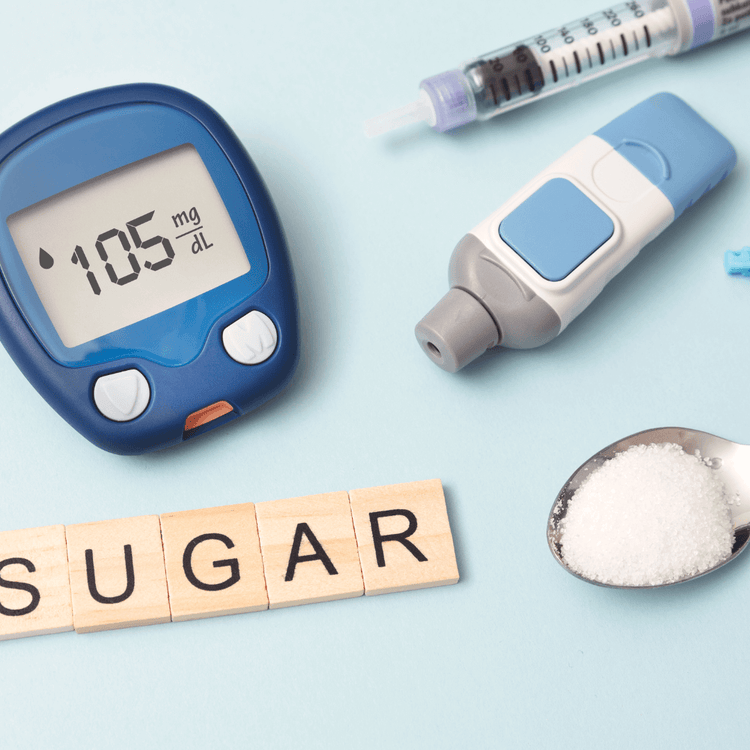Diabetes: The Basics Explained

Diabetes (scientifically known as Diabetes Mellitus) is a group of metabolic diseases defined by an elevated glucose concentration in the body.
This is because the body becomes defective in insulin secretion and/or has an inability to use insulin. Insulin is a hormone the body uses to allow glucose sugar to enter cells to produce energy.
What Are The Health Risk Of Diabetes?
Sustained high glucose (sugar) levels in the blood stream puts individuals at risk of:
- Heart and Vascular diseases
- Chronic kidney disease
- Oral health issues
- Vision and hearing issues e.g. cataracts
- Nerve damage e.g. tingling or numbness in the hands or feet
Types Of Diabetes
Type 1 (5-10% of all cases):
- Is a condition where the pancreas produces little or no insulin
- Type 1 is most often caused by autoimmune destruction of the insulin producing cells of the Pancreas
- Usually appears during childhood or due to factors such as genetics and some viruses
Type 2 (90% of all cases)
- Is caused by insulin resistant skeletal muscle and liver
- This means the body becomes resistant to the normal effects of insulin
- The body will also gradually lose the capacity to produce enough insulin in the pancreas
- A common feature is excess body fat specifically in the upper body (abdomen)
- Type 2 Diabetes has strong genetic and family related risk factors, however it is often associated with modifiable lifestyle risk factors such as diet (sugar intake) and physical activity levels
Gestational Diabetes
- Is a form of diabetes that occurs during pregnancy.
- Majority of women will no longer have gestational diabetes following the birth, however some women may continue to have high glucose levels post-partum.
Prediabetes
- Is a condition characterized by elevated blood glucose when you consume carbohydrates (also known as impaired glucose tolerance) or; elevated glucose levels in a fasted state (impaired fasting glucose).
- People with prediabetes are at very high risk of developing type 2 diabetes.
So there you have it. You've learnt about Diabetes, it's different forms and potential health consequences.
IMPORTANT INFORMATION: All content provided here is of a general nature only and is not a substitute for individualised professional medical advice, diagnosis, or treatment, and reliance should not be placed on it. For personalised medical or nutrition advice, please make an appointment with your doctor, dietitian, or qualified health care professional.
Reference:
ACSM’s Guidelines for Exercise Testing and Prescription (ninth edition) 2014
Written By Bec Eisenhauer
(Accredited Exercise Physiologist
Accredited Exercise Scientist)
